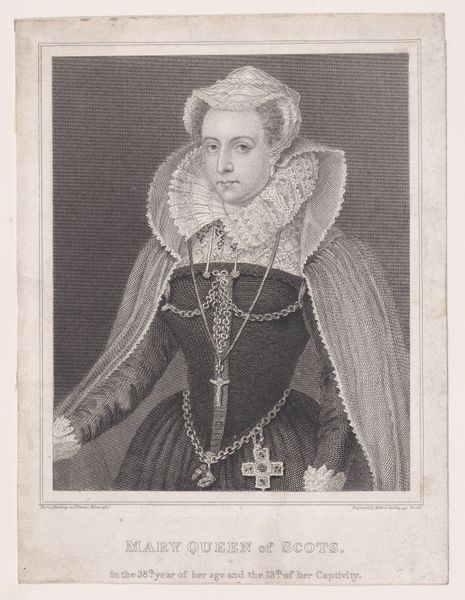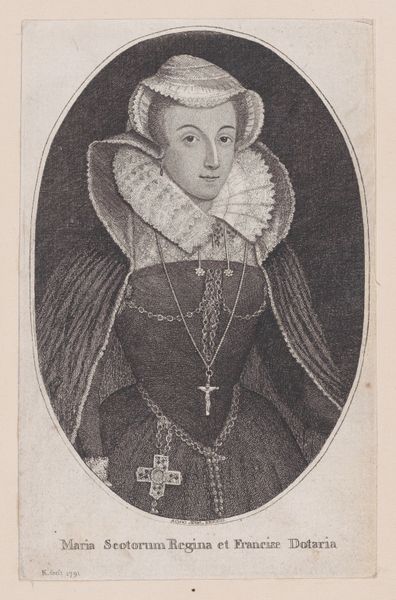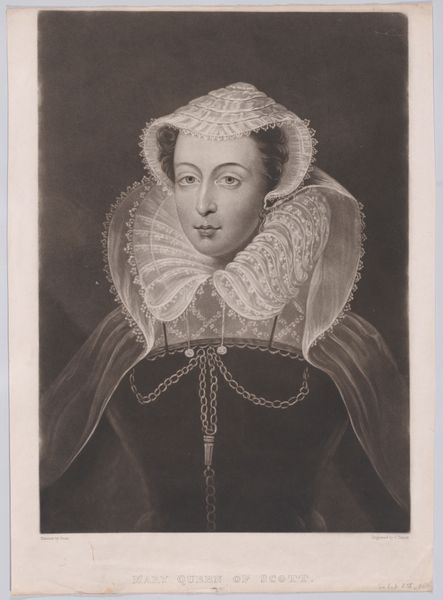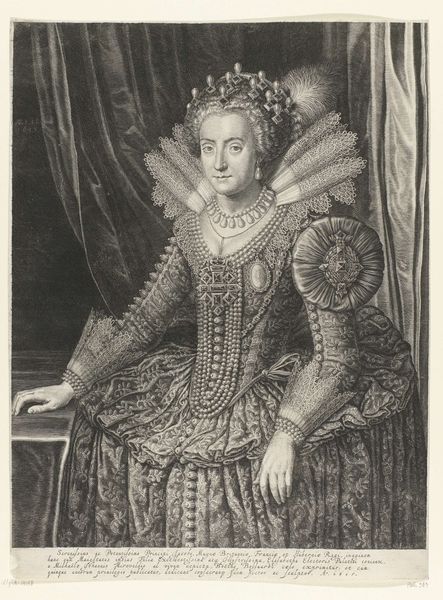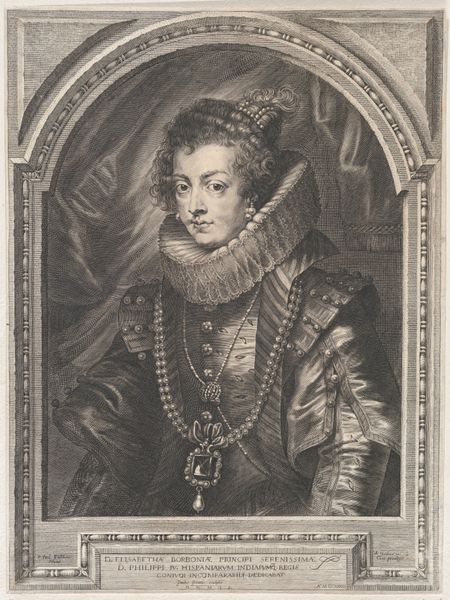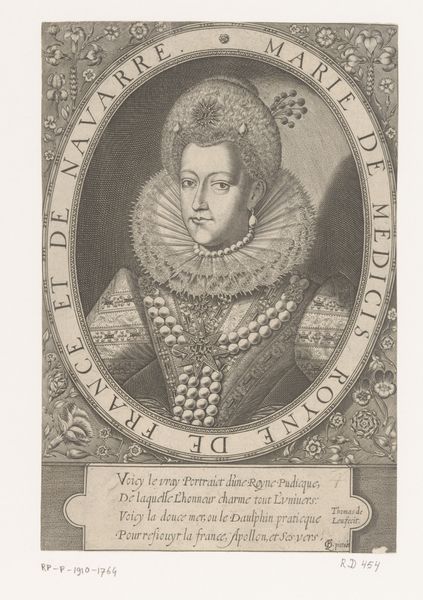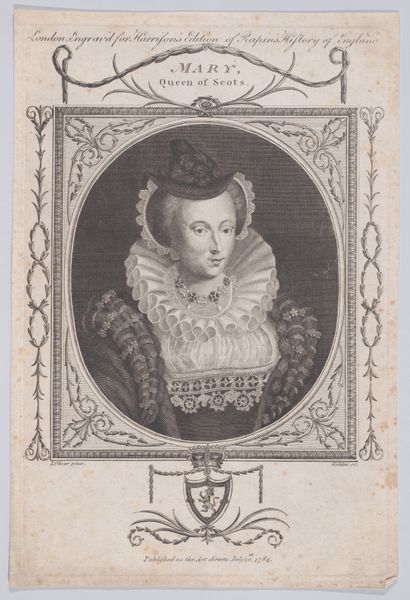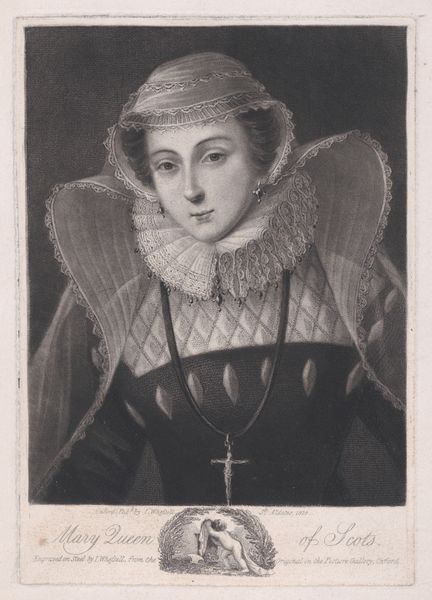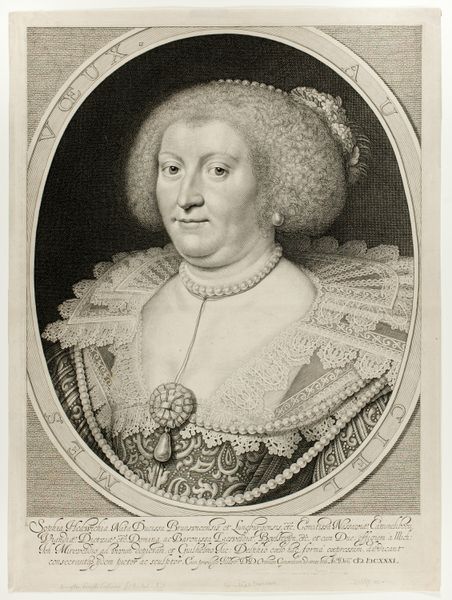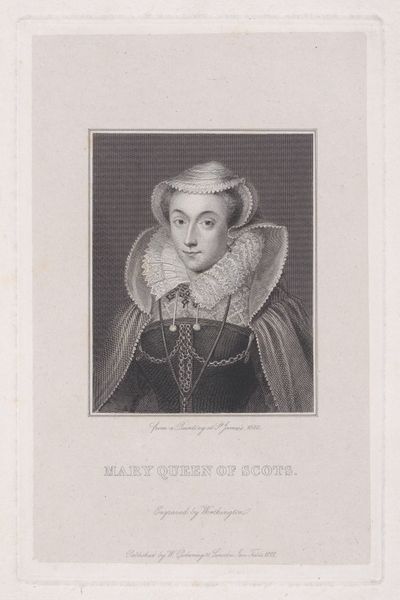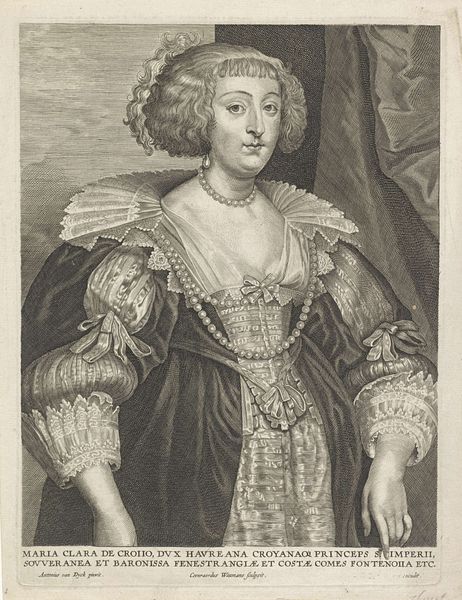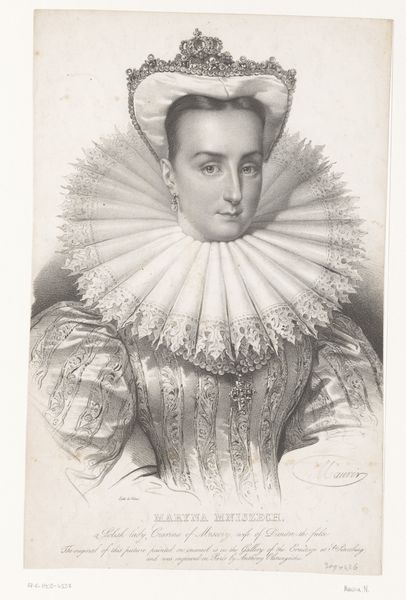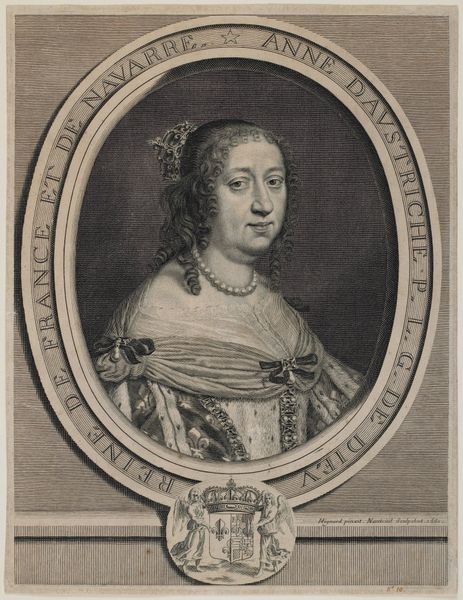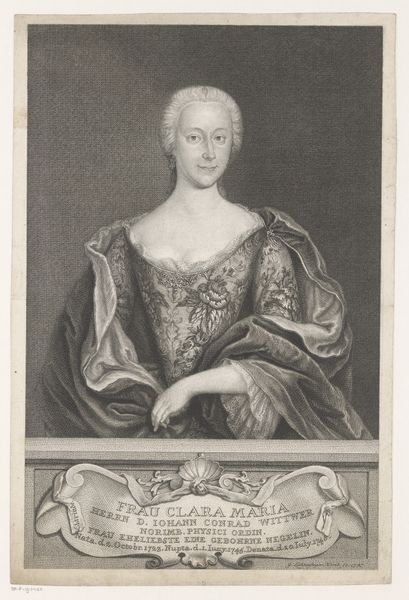
drawing, print, paper, engraving
#
portrait
#
drawing
# print
#
paper
#
romanticism
#
engraving
Dimensions: Sheet: 4 3/16 × 2 11/16 in. (10.7 × 6.8 cm)
Copyright: Public Domain
This is a print of Mary, Queen of Scots, made around the turn of the 18th century by Robert Cooper. It’s rendered on paper using a technique called engraving. Look closely and you’ll see the result of a painstaking, repetitive process. Cooper would have used a tool called a burin to manually cut lines into a metal plate. That plate would then be inked, and pressed onto paper to leave an impression. The fineness of the lines, and the density with which they’re packed together, creates an almost photographic realism. Engraving like this was typically deployed to make exact copies of paintings, so that images could be circulated widely. In this case, the print probably reproduces a lost portrait of Mary. Note that printmaking was also a highly developed craft in its own right, with skilled workshops often run as family businesses. So, while this image might appear at first glance to be “mere” reproduction, it’s actually a testament to Cooper’s artistic virtuosity, and to the wider world of artisanal production in which he worked.
Comments
No comments
Be the first to comment and join the conversation on the ultimate creative platform.
